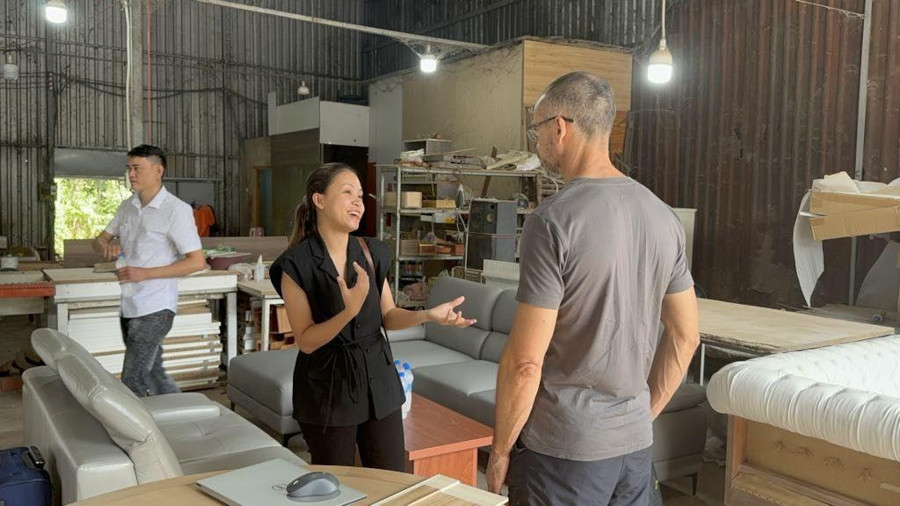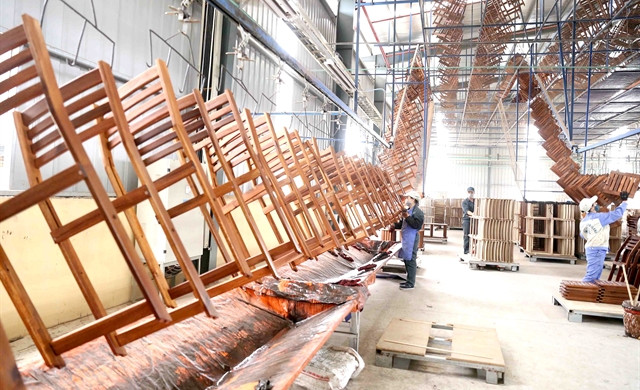Starting an export furniture business from Vietnam offers a wealth of opportunities, given the country’s established reputation for high-quality craftsmanship, competitive pricing, and growing demand in global markets.
Whether you’re looking to tap into European, American, or other international markets, the furniture export sector in Vietnam presents a promising avenue for entrepreneurs.
This guide will walk you through the key steps to starting and running a successful furniture export business in Vietnam.
Understand the Market and Identify Your Niche
Before launching your export furniture business, it is essential to conduct thorough market research. This research helps you understand what type of furniture is in demand globally, the preferences of different regions, and where your business can excel.
- Identify Target Markets: Focus on specific countries or regions where there is high demand for Vietnamese furniture. For instance, European countries like France, Germany, and the UK have a strong market for premium furniture, while the U.S. often imports affordable yet stylish pieces.
- Assess Trends: Research current furniture trends, including eco-friendly, minimalist, rustic, and mid-century modern designs. Aligning your product line with these trends can help you capture a larger market share.
- Identify a Niche: Specializing in a particular type of furniture, such as outdoor furniture, office furniture, or eco-friendly pieces, can help you stand out in a crowded marketplace. Focus on your strengths and the unique features of Vietnamese furniture manufacturing.
Develop a Business Plan
A clear and comprehensive business plan is essential for the success of your export furniture business. Your plan should outline your business objectives, strategies, financial projections, and more.

Key components of your business plan should include:
- Business Structure: Decide whether you will set up a sole proprietorship, partnership, or limited liability company (LLC).
- Product Line: Define the types of furniture you want to export. Will you offer custom pieces or mass-produce standard models?
- Pricing Strategy: Research the pricing structures of your competitors. Offer a competitive price that balances production costs, profit margins, and market demand.
- Marketing Plan: Outline how you will promote your products to international clients. Consider leveraging digital marketing, attending trade fairs, and using social media platforms.
- Financial Plan: Establish how you will fund your operations, including setting aside capital for manufacturing, shipping, and operational expenses. Be clear on your cost structure and pricing model.
Choose Reliable Suppliers and Manufacturers
The strength of your export furniture business lies in the quality and reliability of your suppliers and manufacturers.

Vietnam’s furniture manufacturing sector is well-established, with numerous companies offering high-quality, hand-crafted furniture.
- Find Trusted Manufacturers: Choose manufacturers who produce the type of furniture you want to export and are capable of scaling up production as your business grows. Consider factors such as material quality, workmanship, production capacity, and reliability.
- Quality Control: Establish quality control processes to ensure that the furniture you’re exporting meets international standards. This is especially important in markets like Europe and North America, where consumers expect high-quality products.
- Develop Relationships: Build strong relationships with your manufacturers to ensure timely deliveries and flexibility. Strong communication and trust are key to smooth operations.
Navigate Export Regulations and Licensing
Exporting furniture from Vietnam requires compliance with local and international regulations. These regulations cover everything from product certifications to shipping and customs procedures.
- Register Your Business: Ensure your business is legally registered with the Vietnamese government. Obtain necessary licenses and permits to export furniture internationally.
- Understand Import Requirements: Each target market has its own set of import regulations. For instance, the European Union requires certain certifications for wood products to prevent the spread of pests. Research these regulations thoroughly to avoid delays or penalties.
- Export Documentation: Prepare the necessary export documentation, such as invoices, bills of lading, certificates of origin, and export permits. Ensure you comply with the customs requirements of both Vietnam and your target market.
Set Up Efficient Logistics and Shipping Channels
The logistics of exporting furniture are a critical element of your business. Furniture is bulky and often fragile, so efficient, cost-effective shipping solutions are key to maintaining profitability.
- Select a Freight Forwarder: Choose a reputable freight forwarder who specializes in international shipments. They will help you navigate shipping logistics, find the most efficient routes, and manage customs clearance.
- Packaging and Protection: Proper packaging is crucial to ensure that furniture arrives at its destination safely. Consider using custom crates, padded wrapping, and protective materials to prevent damage during transit.
- Shipping Costs: Calculate shipping costs into your pricing structure. Work with your freight forwarder to find the most cost-effective yet reliable shipping methods, such as container shipping for bulk orders.
Market Your Furniture Exports Internationally
Marketing your furniture in international markets is essential to attracting clients and building your brand. Here are some strategies to consider:
- Trade Shows and Exhibitions: Participate in international furniture trade shows such as the Milan Furniture Fair or the High Point Market. These events are a great way to showcase your products and network with potential buyers.
- Online Presence: Build a website and optimize it for search engines (SEO) so that international customers can find your business online. Use platforms like Alibaba, Etsy, or Amazon to expand your online presence and reach a global audience.
- Social Media and Digital Marketing: Leverage social media platforms like Instagram, Pinterest, and Facebook to showcase your furniture. These platforms are visual and well-suited for promoting stylish and high-quality pieces.
- B2B Marketing: Establish relationships with retailers, wholesalers, and interior designers who can sell your furniture in their respective markets. Use B2B platforms, industry publications, and networking events to connect with key decision-makers.
Build Strong Relationships with International Buyers
Building a network of loyal customers is essential for long-term success in the furniture export business.

Establishing strong relationships with international buyers will lead to repeat business and referrals.
- Offer Customization: Many international buyers prefer bespoke furniture or custom-designed pieces. Offering customization options can help you meet the specific needs of your clients and give your business a competitive edge.
- Customer Support: Provide excellent customer service, from pre-sale inquiries to post-sale support. Offering reliable communication, after-sales services, and easy returns policies can differentiate your brand from competitors.
- Maintain Competitive Pricing: Keep an eye on your competitors’ pricing strategies and adjust yours accordingly. However, don’t compromise on quality to maintain low prices.
Monitor and Adapt to Market Trends
The furniture industry is constantly evolving, so it’s important to stay updated on the latest trends and adapt your business accordingly.
- Sustainability: Increasingly, international buyers are looking for sustainable, eco-friendly furniture. Consider using renewable materials, non-toxic paints, and sustainable manufacturing processes to appeal to environmentally-conscious markets.
- Design Innovation: Regularly update your furniture designs to keep up with global trends. Work with designers or create an in-house team to offer innovative, market-leading products.
- Customer Feedback: Regularly solicit feedback from your international clients to improve your products and services. This will help you understand what works and where you can make adjustments.
Conclusion
Starting an export furniture business in Vietnam can be a lucrative and rewarding venture. By understanding the market, choosing reliable suppliers, complying with regulations, establishing efficient logistics, and building strong relationships with international buyers, you can lay the foundation for a successful furniture export business.
As with any business, success depends on staying adaptable, delivering quality products, and constantly innovating to meet the needs of global markets.

